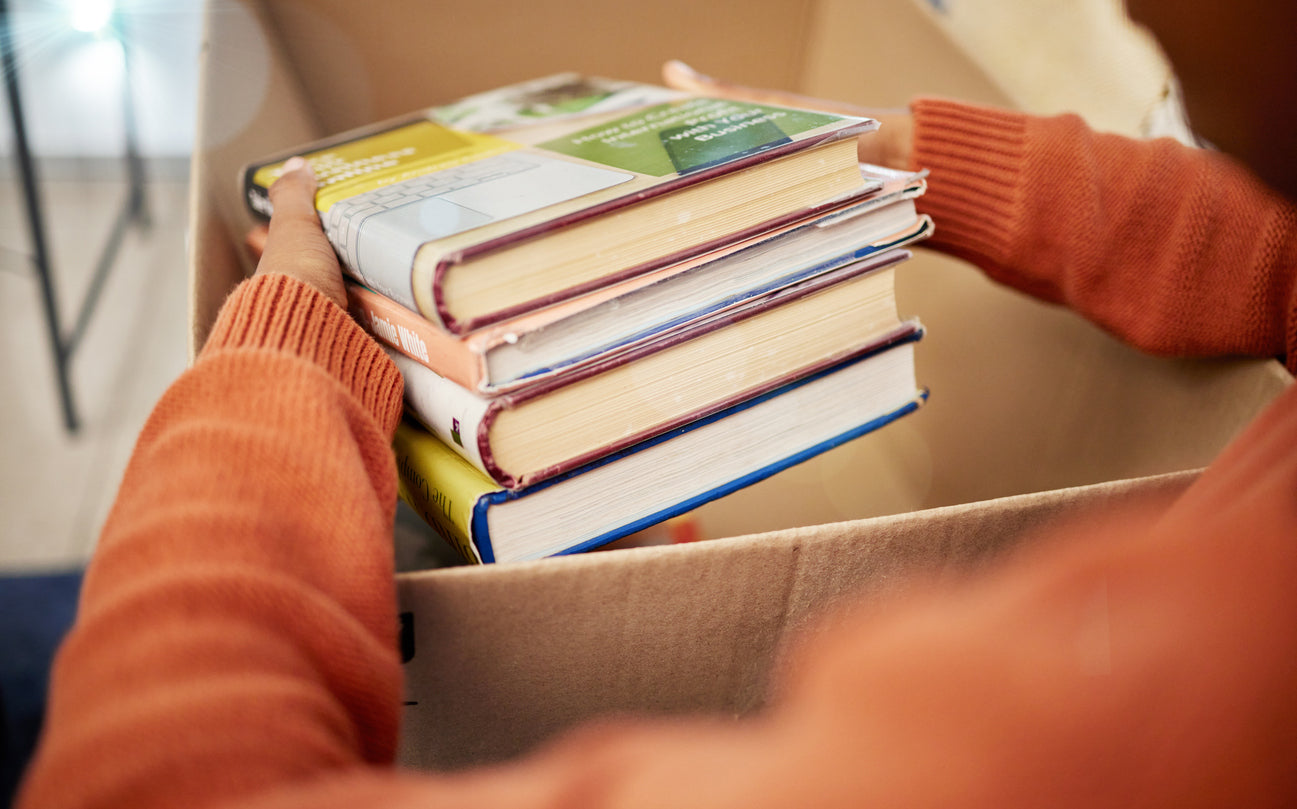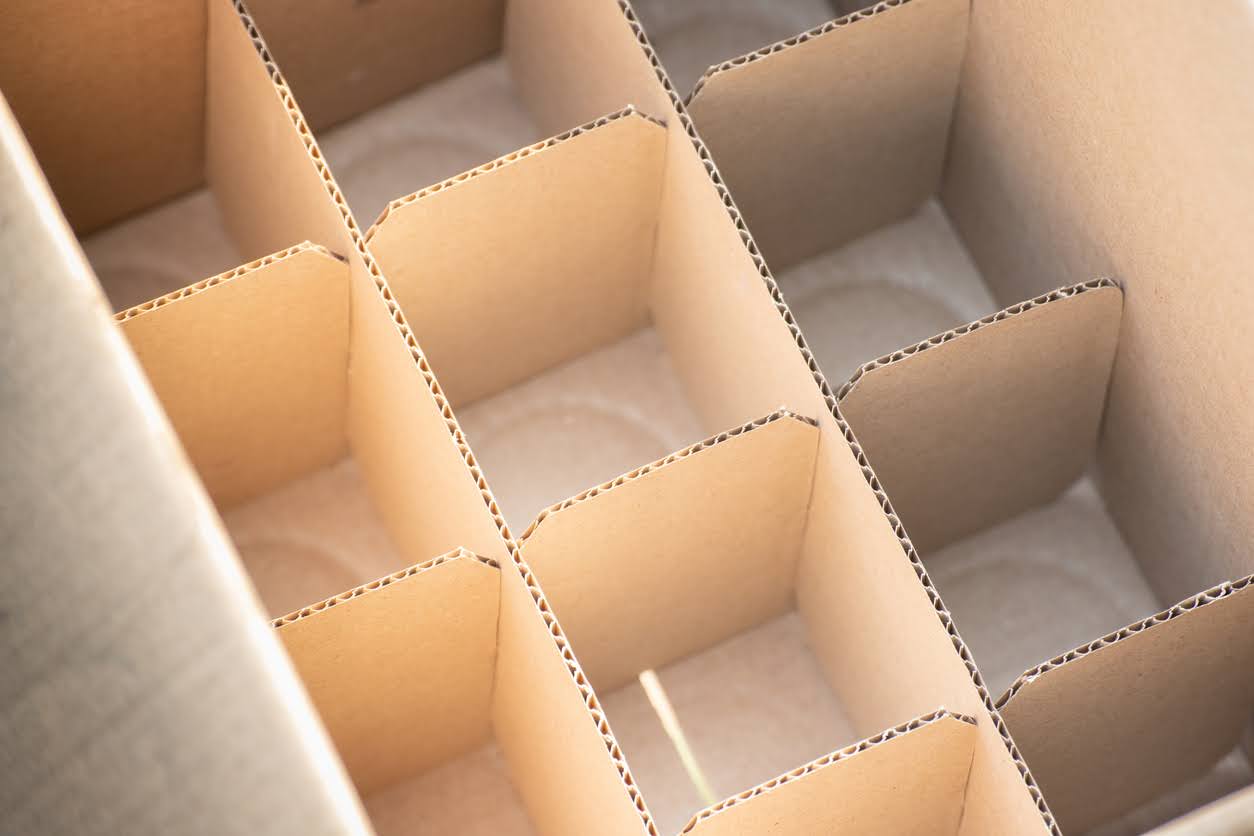Moving your book collection doesn't have to be overwhelming. Whether you're a book lover with hundreds of volumes or someone with a modest collection, proper packing protects your books from potential damage and makes the moving process much smoother. Follow these smart strategies to ensure your books arrive at your new home in perfect condition.
Sort and Declutter Your Book Collection
Before you even think about packing supplies, the smartest move you'll make is sorting through your entire book collection. This crucial first step saves money on moving costs and reduces the number of boxes you'll need to transport.
Go through each room systematically and divide your books into categories: keep, donate, sell, and discard. Consider donating unwanted books to local libraries, schools, or charity organizations – many offer pickup services and provide tax deduction receipts.
For valuable books or collectible books you're keeping, make a quick inventory noting any rare books, first editions, or books with sentimental value that will need extra care during the packing process. This preparation helps you identify which books require special attention and additional protection.
Decluttering first means fewer books to pack, meaning fewer packing materials needed and lower moving costs. You'll thank yourself later when you're not hauling boxes to and from your home!
Gather Your Supplies
Having the right supplies is essential for protecting your book collection. Quality packing materials prevent damage and make the entire moving process more efficient.
Essential Packing Materials:
- File boxes and small boxes (never use larger boxes for books – they get heavy quick!)
- Packing paper for general protection
- Acid-free packing paper for valuable books and long-term storage
- Bubble wrap for delicate books and extra protection
- Packing tape to secure boxes properly
Box Selection
Always use a file box or a smaller box when packing books. The weight piles on quickly, and using larger boxes can lead to heavy lifting. A good rule: if you can't lift the box comfortably, it's probably too heavy for your moving crew.
Paper Options
Regular packing paper works fine for most books, but acid-free paper is worth the investment for collectibles, rare books, or any volumes going into long-term storage. Acid-free packing paper prevents chemical reactions that could damage pages over time.
Quality Matters
Invest in sturdy boxes that won't collapse under the weight of heavy books. Cheap boxes may fail during transport, causing potential damage to your entire collection. Your book collection is worth the extra protection that quality packing supplies provide.
Master the Basic Techniques
The way you place books in boxes determines whether they arrive in perfect condition or suffer damage during transport. These fundamental techniques work for any book collection.
Step-by-Step Packing Method:
- Line the bottom of each book box with packing paper for cushioning
- Place the heaviest books at the bottom, and lighter books on top
- Pack books standing upright, like on a bookshelf
- Fill any space with soft items or additional packing paper
- Never leave space that allows books to shift during transport
Weight Distribution
Proper weight distribution keeps boxes stable and prevents crushing. Heavy books at the bottom create a solid foundation, while lighter books on top avoid putting excessive pressure on delicate items.
Eliminate Movement
If your books shift during transport, they can get damaged. A properly packed box should have no shifting when gently shaken. Use packing paper, bubble wrap, or soft items to fill every gap.
Create Protective Layers
When mixing different types of books in the same box, use packing paper between sections to prevent scratching and cover damage. This simple step provides additional protection for your valuable items.
Apply Techniques by Book Type
Different books require different approaches. Tailoring your packing process to specific book types ensures better protection and easier unpacking at your new place.

- Hardcover Books: These sturdy books can handle being packed spine-down in small boxes. Their rigid covers provide natural protection, but still use packing paper between valuable items to prevent scratching.
- Large Books and Coffee Table Books: These oversized books require special handling. Wrap them individually in packing paper or bubble wrap, and pack them flat in boxes with plenty of cushioning material around them.
- Paperback Books: More flexible and prone to bending, paperback books often do better when packed flat in layers. Alternate the direction of each layer to maximize space efficiency while preventing damage.
- Large Books and Coffee Table Books: These oversized books require special handling. Wrap them individually in packing paper or bubble wrap, and pack them flat in boxes with plenty of cushioning material around them.
- Valuables and Rare Books: Wrap each individually in acid-free paper, then add bubble wrap for additional protection. Consider transporting these yourself rather than on the moving truck. Use similar care for comic books with acid-free paper and rigid support.
- Smaller Books: Pack smaller books together in one section of the box, using packing paper to keep them grouped and prevent shifting among larger volumes.
For any book collection with significant value, take photos before packing. This documentation helps with insurance claims if damage occurs during the move.
Organization and Labeling for Stress-Free Unpacking
Smart labeling saves hours of frustration when you reach your new home. Create a system that makes unpacking efficient and gets your library organized quickly.
Effective Labeling Strategies:
- Mark each box with "BOOKS" and the destination room
- Number boxes and keep a simple inventory list
- Note "HEAVY" on all book boxes to alert movers
- Mark boxes containing valuable items as "FRAGILE
Common Mistakes to Avoid:
- Never use larger boxes for books, they can become too heavy to safely move
- Don't pack books with other household items that might leak or damage them
- Avoid placing book boxes where they might get wet during transport
- Always mark boxes clearly so everyone knows they're handling heavy, valuable items
Moving Day Safety:
- Lift with your legs, not your back
- Keep book boxes away from moisture
- Alert movers which boxes contain books (labeling makes this easier!)

Pack books by room or category – kitchen cookbooks together, bedroom books together, living room/coffee table books together – to make unpacking and organizing your new place easier.
For book lovers with extensive collections, create a basic inventory by numbering each box and noting contents to locate specific books quickly in your new home. Mark long-term storage boxes clearly with dates and contents, and store them in a dry place to prevent moisture damage.
Unpacking and Settling In
Once you reach your new place, prioritize unpacking books destined for a dry place away from moisture. Unpack valuable books first and inspect them for damage. Start with frequently used books and gradually work through your entire collection. Set up your main reading areas first – having a few favorite books accessible immediately makes your new home feel more comfortable while you settle in.
Remember, the packing process doesn't end when the moving truck leaves. Take time to properly arrange your book collection in your new space, ensuring valuable items are stored safely and your everyday books are easily accessible.
With these smart packing strategies, your book collection will arrive safely at your new home, ready to fill your shelves and continue bringing you joy for years to come.





Leave a comment
This site is protected by hCaptcha and the hCaptcha Privacy Policy and Terms of Service apply.